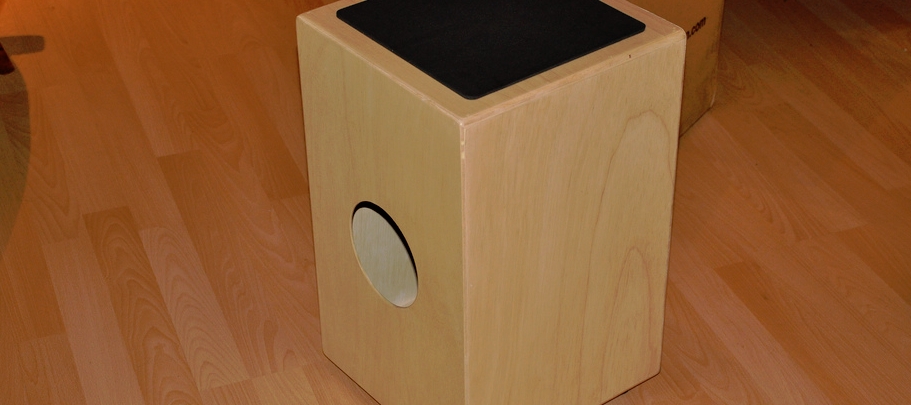Today let’s take a look at an instrument that’s not entirely related to the guitar family. However, I’ve been witnessing its rebirth in modern music as artists have started noticing it as a great addition to their percussion instruments. Cajón is an interesting thing to know about when you’re jamming with your buddies and you’d like a cheap drum-like instrument that’s small and portable. This is a guest post by Sally.

The cajón drum is a box shaped percussion instrument played by slapping the face of it with your hands. Its origins lie in Peru but today, the instrument is gaining in popularity worldwide for use in a variety of musical genres including blues, rock, funk and notably Flamenco. The name cajón (pronounced Ka-Hon) is Spanish and it means, appropriately, box!
Origins
The instrument first evolved in coastal Peru, probably at some point early in the 19th century, where African slaves were banned from playing their native instruments. The cajón could have evolved into its distinctive shape because of box like musical instruments in west and central Africa, the homelands of the slaves.
Due to the ban, new instruments were fashioned from the materials at the slaves’ disposal which were wooden shipping crates, tea crates in the plantations and sometimes, the drawers from small dressers.
It has also been suggested that the box form was used as the drums could easily be disguised as furniture like chairs or stools and thus, escape being confiscated as musical instruments. Being caught playing music could get you imprisoned or even killed so an instrument which looked like a household item was a must. African traditions and the suppression of music in Peru were forces that combined to produce a drum that eventually spread across the world.
The drum became an important element in Peruvian music and a similar instrument known as the Cuban box drum was used to underpin the distinctive rhythm of the rumba. In the 1970’s cajón maestro Caitro Soto gifted one of the drums to Spanish guitarist Paco de Lucia when he visited Peru. De Lucia loved the sound of the instrument and immediately purchased another to take home to Spain. He then introduced the sound to Flamenco music with which the drum is now synonymous to.
Playing
The musician sits astride the cajón drum, tilting the box and striking the front panel with his hands. A wide variety of sounds can be produced by striking the instrument in different ways. The first drums were primitive constructions but modern instruments have adjustable timbre and some have several vertical cords to create a buzz effect.
The drums are usually fashioned from hardwood of 1.3 cm to 2 cm thickness with a thinner piece of plywood for the striking surface or tapa. A hole is cut in the back panel for sound projection. The boxes usually stand approximately 18 inches (40 cm) high and are about 10 inches (22 cm) deep.
Today
The instrument which started with African slaves preserving their musical heritage then became an important element of Peruvian and Cuban folk music and now features in every conceivable genre due to its diversity of sound and ease of playing.
The drum is now an integral part of Flamenco music but can be heard in rock, pop, blues and jazz tracks across the world. There are now many brands of the instrument available including the Sela cajón drum box, Meinl and Schlagwerk and it is possible to take lessons in playing the instrument.
Sally Stacey is a music enthusiast who is a great fan of Flamenco.







Comments by Carlos
Learning Guitar – What Are the Possibilities
Good point, thanks. I will have to give it a ...
Getting To Know The Top 10 Most Famous Guitars
Apparently, Ultimate-Guitar.com readers didn't consider it being famous enough. You ...
Guitar Lessons: The Next Step Past Basics
I've started my adventure with classical guitar too. Cheers!
Learning the Basics of Guitar Theory
From my experience, the best way is to take a ...
Learn How to Play Guitar by Ear
Thanks for commenting, Olaf :)